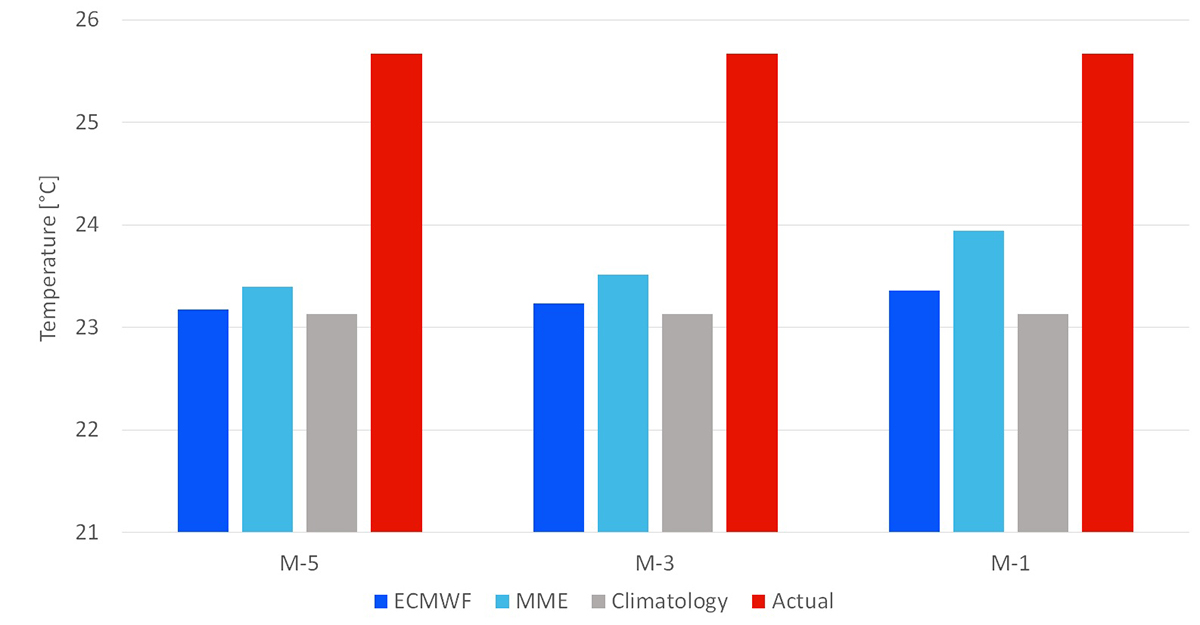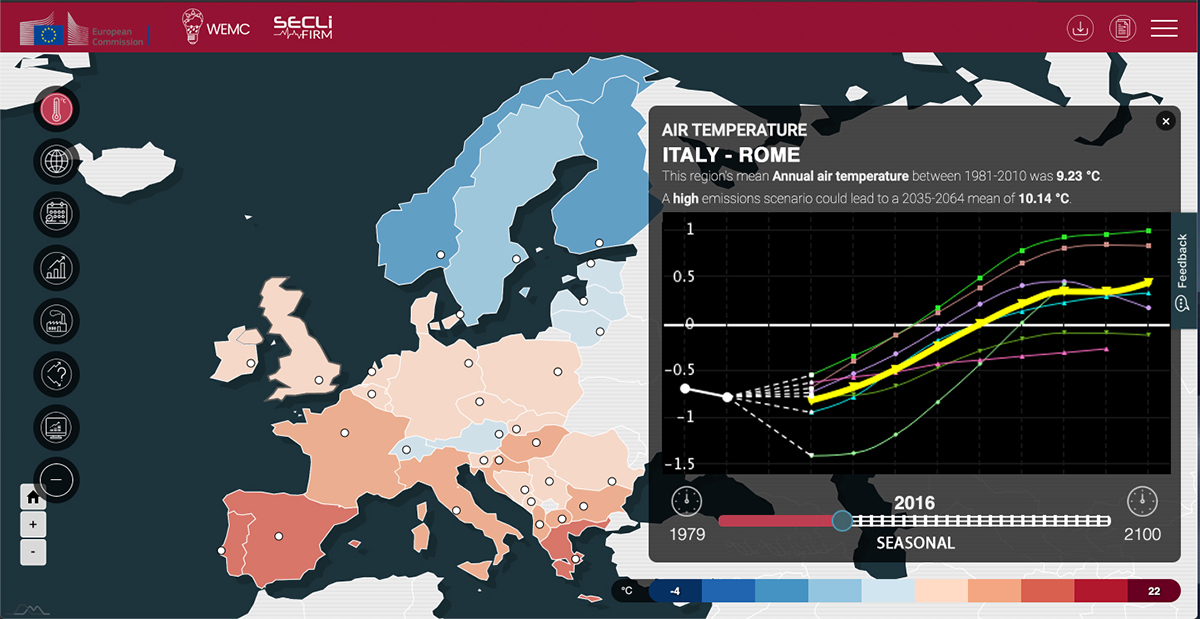Here, Alberto Troccoli explains why and how Europe’s H2020 project SECLI-FIRM continues to offer accurate seasonal climate forecasting which can reduce risk and cost alike for energy and water businesses
Energy and water businesses are amongst the sectors increasingly impacted by climatic events such as heat waves, drought and storms. This is why they are seeking to mitigate their losses by making use of the latest advances in seasonal climate forecasting.
The EU H2020 SECLI-FIRM, a 45-month 10-partner project, now running in its last year, was specifically conceived in response to these industry concerns. The immediate aim of SECLI-FIRM was to offer accurate seasonal climate forecast to help reduce risk as well as cost. In turn, the optimal use of these forecasts should lead to a better supply-demand balance in the energy and water sectors, therefore positively contributing to both climate change adaptation (forecasts represent soft adaptation measures) and mitigation.
Nine case studies co-designed and co-developed with energy utilities, renewable energy generators, grid operators and water utilities constitute the backbone of the project.
While SECLI-FIRM’s ultimate goal is to quantify the value of seasonal climate forecasts by adapting and improving the way seasonal forecasts work for specific case studies (for selected regions, seasons, etc.), the expected outcome is to demonstrate the usefulness of seasonal climate forecasts as an additional tool for decision making, and impart confidence in their long-term adoption for industry management decisions.
The value of dynamical seasonal climate forecasts
Based on the way dynamical seasonal climate forecasts are generated, namely making use of the best physics and state of the climate at the start of the forecast, it is expected that they bring value compared to the current use of simple climatological information. At its simplest the latter entails using information from the past few years, or considering analogous climatic situations. However, in general the past is not a good indicator of the future, particularly when strong signals are present, such as in the case of heat waves.
SECLI-FIRM has addressed three main scientific issues:
To demonstrate dynamical models have sufficient additional information to perform better than climatology.
To understand the limitations of using the forecast over one or even a few years, even if they have a strong signal (e.g. the heat wave mentioned above) – seasonal forecasts are probabilistic in nature, and therefore the result of a season can not be conclusive, their effectiveness needs to be tested over a sufficiently high number of seasons or events.
The investigation of multi-model forecast combinations.
Understanding the decision making process
Before addressing the value of seasonal climate forecasts, project partners, covering a wide spectrum of competencies, ranging from producers of forecasts, to researchers/academics, to service providers, to industry experts, are required to be on the same page regarding what is available and feasible in terms of forecasts, and what is to be targeted in each case study.
Critically this requires a proper understanding of the terminology used by the different actors. This seemingly straightforward step has in fact required an intensive interaction between these different communities, underestimated in the original project planning. This effort, however, has borne its fruit and, after a vacillating start, has helped cement the relationship between research and industry partners, and paved the way for an effective case study co-design and co-development process.


A key step in the forecast value assessment has been a deeper understanding of the decision-making process. It is crucial to understand at which stage of the decision making climate information is actually used and how it is used. This too was an underestimated process, but has allowed us to create a framework and a benchmark with which we can compare the added value of seasonal forecasts and whose crucial component has been the co-development of decision trees for each case study.
Meanwhile the scientific developments in SECLI-FIRM, which have been progressing in the background all along, have explored various options for extracting the most signal from the forecast for each case study. Approaches range from tailored downscaling, to the use of weather regimes, to the exploitation of large-scale climatic drivers (such as the North Atlantic Oscillation) to the tuning of multi-model combinations, including by means of machine learning models.
The predictive power of tailoring forecasts
As an example of a case study, the seasonal forecast for the Italian (and southern Europe more generally) heat wave of 2015, using one of the best forecasting systems, indicates a moderate signal in the right direction (i.e. a positive temperature anomaly). And while the signal is not as high as the observed temperature, it is encouraging that the forecast points in the right direction, not only one month before the target event (July 2015) but also three and five months in advance (Fig. 1). This reflects onto a corresponding positive power demand signal, consistent with the observed one.
It is expected that for a mid-latitude continent like Europe the quality of the forecast will not be as high as in the tropical areas. This is something that the industry has known for some time, and it is one of the main reasons for the slow uptake of seasonal forecasts for application in the mid latitudes. However, a project like SECLI-FIRM is showing how tailoring the forecast to specific case studies can enhance its predictive power. More importantly, the interaction, co-design and co-development, at the core of SECLI-FIRM activities, have given users sufficient confidence in the benefit of using seasonal forecasts, particularly as a long-term strategy.
In conclusion, SECLI-FIRM is demonstrating the critical value of interdisciplinary interactions, mainly between scientific researchers and industry experts. This is one of the major outcomes of SECLI-FIRM, along with the improved insights into the use and value of seasonal forecasts for specific decision making. However, while stakeholder engagement, co-design and co-developments are now starting to be understood and appreciated by all actors in the climate service supply chain, thanks also to SECLI-FIRM, the road ahead is still steep. This is why it is critical the EU and similar funding bodies continue to support these climate service projects.
SECLI-FIRM web site: https://www.secli-firm.eu
SECLI-FIRM videos: explainer, Case Study 1 and Case Study 7: https://www.youtube.com/watch?v=YQw4D9njzso
https://www.youtube.com/watch?v=kYICNVNYJUM
https://www.youtube.com/watch?v=Oz7XrQrFIRs
Twitter @SECLI-Firm

The Added Value of Seasonal Climate Forecasts for Integrated Risk Management Decisions (SECLI-FIRM) project has received funding from the European Union’s Horizon 2020 research and innovation programme under grant agreement No 776868.
*Please note: This is a commercial profile











